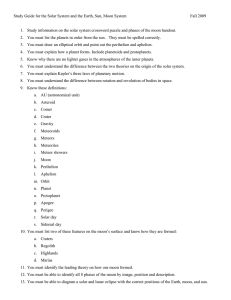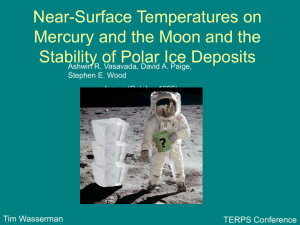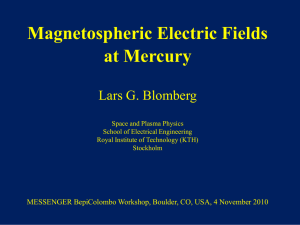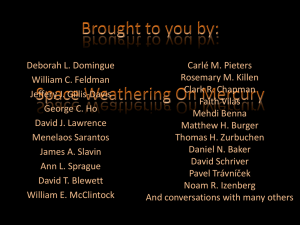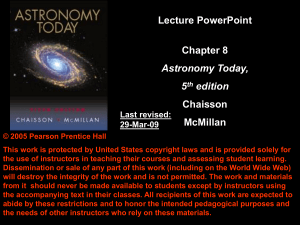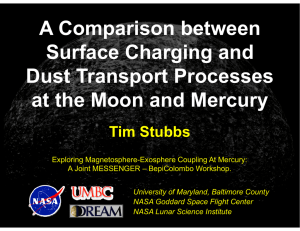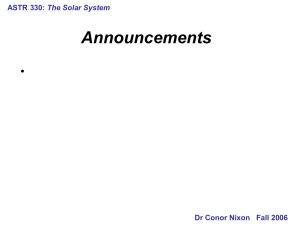A Comparison Between Surface Charging and Dust Transport Processes at... Timothy J. Stubbs
advertisement
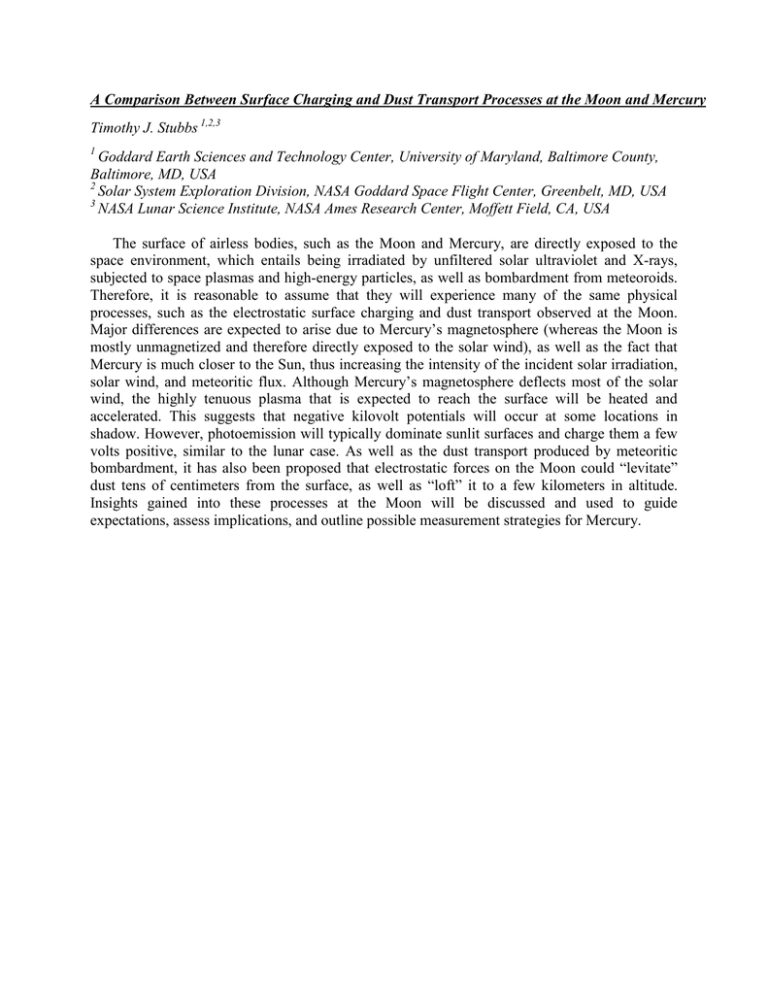
A Comparison Between Surface Charging and Dust Transport Processes at the Moon and Mercury Timothy J. Stubbs 1,2,3 1 Goddard Earth Sciences and Technology Center, University of Maryland, Baltimore County, Baltimore, MD, USA 2 Solar System Exploration Division, NASA Goddard Space Flight Center, Greenbelt, MD, USA 3 NASA Lunar Science Institute, NASA Ames Research Center, Moffett Field, CA, USA The surface of airless bodies, such as the Moon and Mercury, are directly exposed to the space environment, which entails being irradiated by unfiltered solar ultraviolet and X-rays, subjected to space plasmas and high-energy particles, as well as bombardment from meteoroids. Therefore, it is reasonable to assume that they will experience many of the same physical processes, such as the electrostatic surface charging and dust transport observed at the Moon. Major differences are expected to arise due to Mercury’s magnetosphere (whereas the Moon is mostly unmagnetized and therefore directly exposed to the solar wind), as well as the fact that Mercury is much closer to the Sun, thus increasing the intensity of the incident solar irradiation, solar wind, and meteoritic flux. Although Mercury’s magnetosphere deflects most of the solar wind, the highly tenuous plasma that is expected to reach the surface will be heated and accelerated. This suggests that negative kilovolt potentials will occur at some locations in shadow. However, photoemission will typically dominate sunlit surfaces and charge them a few volts positive, similar to the lunar case. As well as the dust transport produced by meteoritic bombardment, it has also been proposed that electrostatic forces on the Moon could “levitate” dust tens of centimeters from the surface, as well as “loft” it to a few kilometers in altitude. Insights gained into these processes at the Moon will be discussed and used to guide expectations, assess implications, and outline possible measurement strategies for Mercury.

